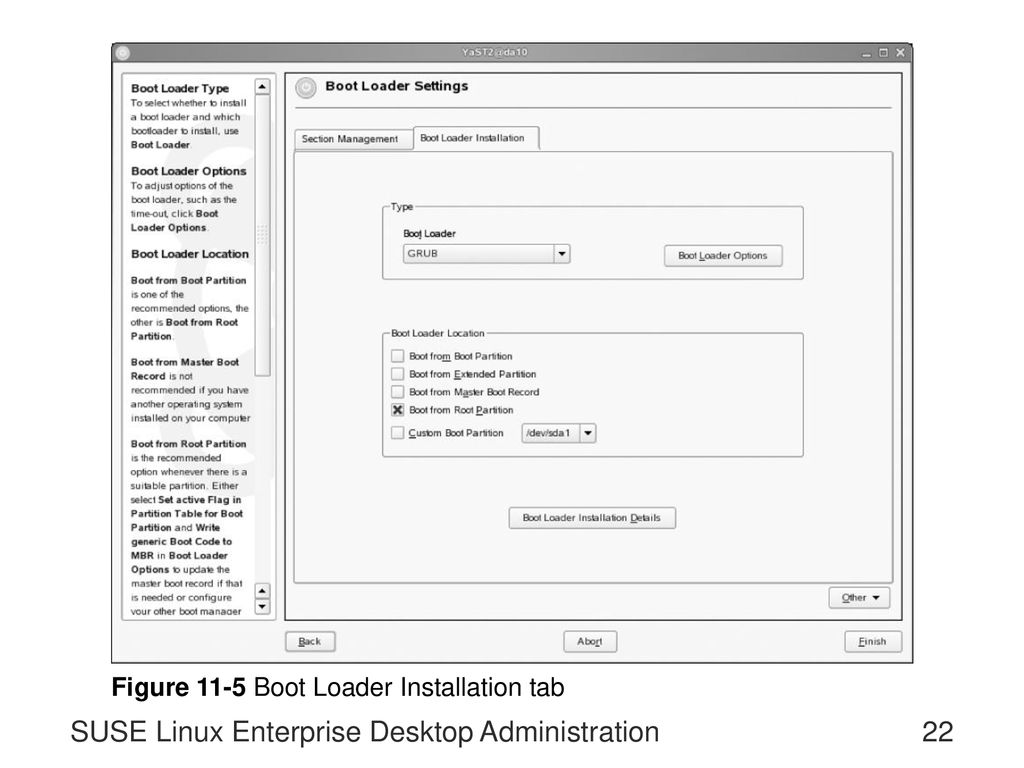

- #Suse create boot partition how to
- #Suse create boot partition install
- #Suse create boot partition 64 Bit
- #Suse create boot partition iso
The path to that system kernel saved to a UEFI environment variable (commonly Boot0000-).A UEFI-compatible system kernel located on that partition (such as the linux kernel).A FAT-formatted GPT partition of type ef00.
#Suse create boot partition install
What's more - it is probably the grub install that broke everything in the first place. grub is just a boot- manager in that context - and almost definitely entirely redundant. It isn't even a boot- loader anymore on EFI systems the bootloader is built-in to the firmware.

#Suse create boot partition how to
I am unsure exactly how to restore my system. However I need this USB to boot into a distribution. I have a work-around currently, which is odd in how it works, I use a liveboot USB (Yumi) and choose to run Linux from hard drive, and I can choose between the distros I have on my computer. The EFI menu doesn't even show my hard drive as a boot option (although it detects it in hardware). When I installed Fedora from a liveCD I got excited and kept hitting next, not realizing I was not installing GPT, but rather LVM.Īfter doing this I cannot boot from a hard disk. The USB device can then be booted from.I am triple booting Ubuntu, Debian, and Fedora. mnt/boot/x86_64/mkbootdisk -64 -partition /dev/sdb1 /mnt mnt/boot/i386/mkbootdisk -32 -partition /dev/sdb1 /mnt Mount -o loop SLES-10-i386-GM-CD1.iso /mnt (/dev/sdb1 must be a primary partition no more than 4GB in size) This example will use /dev/sdb as the USB device.Ĭreate a FAT16 partition on the USB device:

#Suse create boot partition 64 Bit
Note: replace i386 with x86_64 if it is 64 bit
#Suse create boot partition iso
iso file to a temporary directory like C:\isotemp (A utility such as WinRAR can be used for this) The proceedure can then be completed in either Windows or Linux.Ĭreating a bootable USB device from Windows It is first necessary to download CD1 or a mini.iso of SLES 10. Please note that this process only works for SLES10 as there have been changes made to the syslinux package that make this process obsolete in later versions of SLES.


 0 kommentar(er)
0 kommentar(er)
